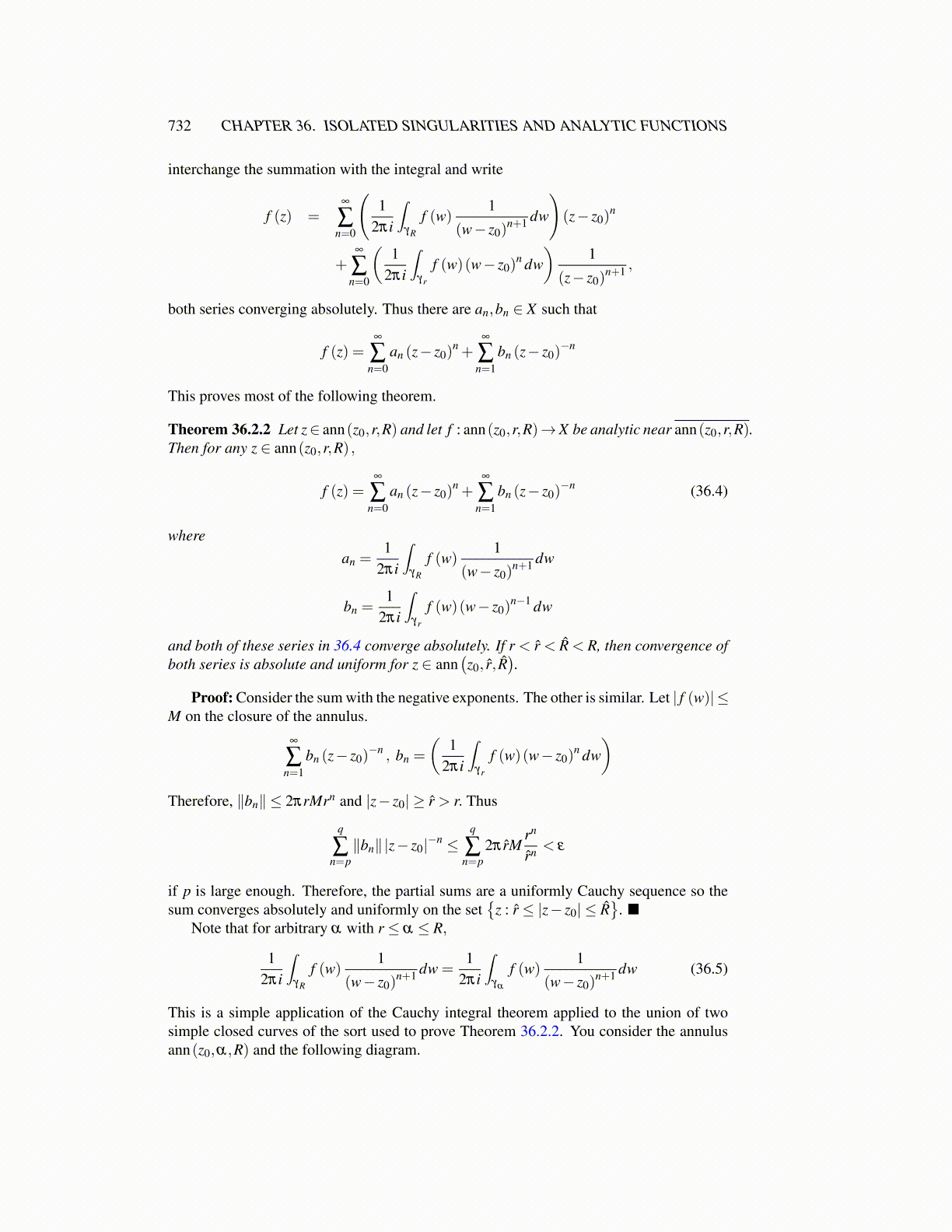
732 CHAPTER 36. ISOLATED SINGULARITIES AND ANALYTIC FUNCTIONS
interchange the summation with the integral and write
f (z) =∞
∑n=0
(1
2πi
∫γR
f (w)1
(w− z0)n+1 dw
)(z− z0)
n
+∞
∑n=0
(1
2πi
∫γr
f (w)(w− z0)n dw
)1
(z− z0)n+1 ,
both series converging absolutely. Thus there are an,bn ∈ X such that
f (z) =∞
∑n=0
an (z− z0)n +
∞
∑n=1
bn (z− z0)−n
This proves most of the following theorem.
Theorem 36.2.2 Let z∈ ann(z0,r,R) and let f : ann(z0,r,R)→X be analytic near ann(z0,r,R).Then for any z ∈ ann(z0,r,R) ,
f (z) =∞
∑n=0
an (z− z0)n +
∞
∑n=1
bn (z− z0)−n (36.4)
wherean =
12πi
∫γR
f (w)1
(w− z0)n+1 dw
bn =1
2πi
∫γr
f (w)(w− z0)n−1 dw
and both of these series in 36.4 converge absolutely. If r < r̂ < R̂ < R, then convergence ofboth series is absolute and uniform for z ∈ ann
(z0, r̂, R̂
).
Proof: Consider the sum with the negative exponents. The other is similar. Let | f (w)| ≤M on the closure of the annulus.
∞
∑n=1
bn (z− z0)−n , bn =
(1
2πi
∫γr
f (w)(w− z0)n dw
)Therefore, ∥bn∥ ≤ 2πrMrn and |z− z0| ≥ r̂ > r. Thus
q
∑n=p∥bn∥|z− z0|−n ≤
q
∑n=p
2π r̂Mrn
r̂n < ε
if p is large enough. Therefore, the partial sums are a uniformly Cauchy sequence so thesum converges absolutely and uniformly on the set
{z : r̂ ≤ |z− z0| ≤ R̂
}. ■
Note that for arbitrary α with r ≤ α ≤ R,
12πi
∫γR
f (w)1
(w− z0)n+1 dw =
12πi
∫γα
f (w)1
(w− z0)n+1 dw (36.5)
This is a simple application of the Cauchy integral theorem applied to the union of twosimple closed curves of the sort used to prove Theorem 36.2.2. You consider the annulusann(z0,α,R) and the following diagram.